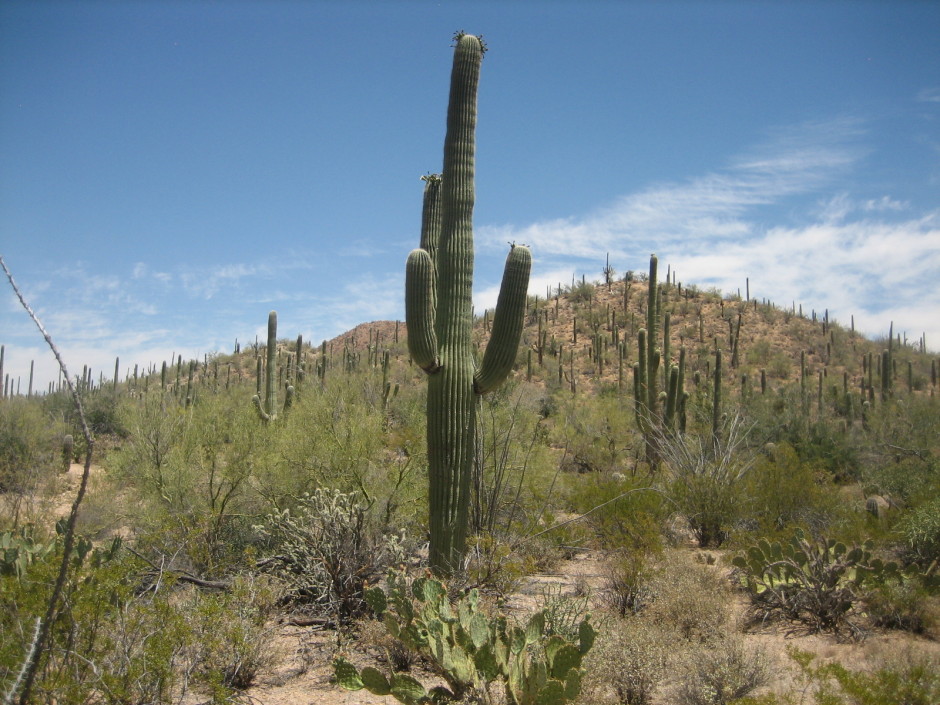My introduction to the exotic flora of Saguaro National Park, in the Sonoran Desert of southern Arizona, was inauspicious, to say the least.
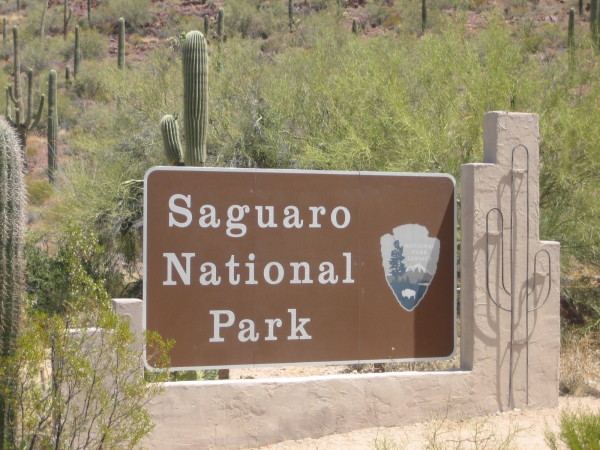
My daughter, Lauren, my occasional travelling companion, had convinced me that a visit to this immense, unspoiled park would be a worthwhile experience due to its signature attraction — the majestic saguaro cactus, the largest specimen of its kind in the United States.
After landing in Phoenix, we drove two hours south to Tucson, settling into our hotel after a fine meal at a Mexican restaurant. The following morning, with the sun shining brightly on a typically warm spring day, we drove toward the western part of the park, a distance of about 15 miles, passing hillsides of cacti, which from afar resembled tombstones.
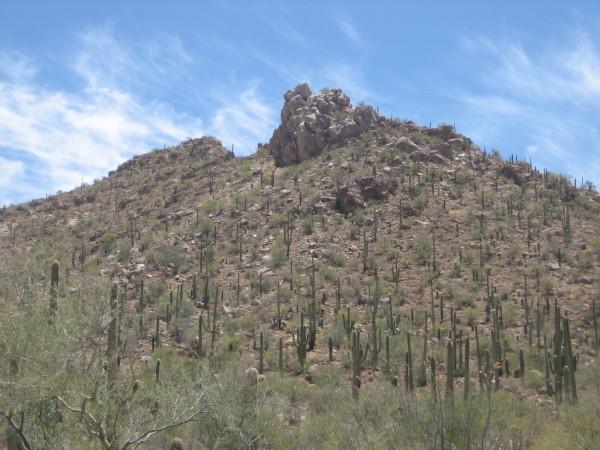
As we got nearer to our destination — one of the hottest, driest places in the United States — we noticed that the desert on both sides of the undulating two-lane asphalt road was alive with a profusion of cacti, shrubs, bushes and trees. Never before had I seen so many cacti in one concentrated area.
Pulling into a roadside viewpoint for a closer look, we wandered around a sandy plain of cacti of every conceivable size and shape. No sooner had I warned Lauren to be careful of their treacherous spines and thorns, which can easily embed themselves on exposed skin, than a cluster of sharp needles attached themselves to my foot.
Since I was wearing sandals, I had only myself to blame. If I had worn my shoes, this mishap would not have happened.
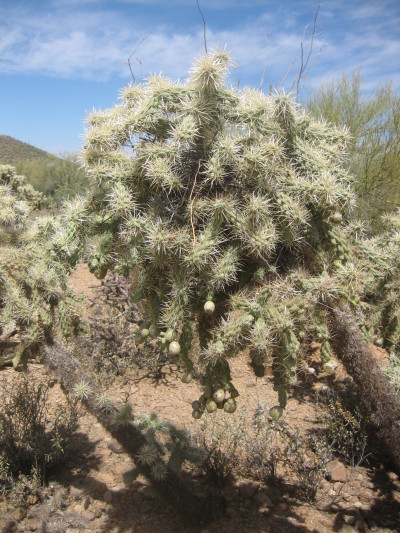
I managed to pull the hard small needles off my foot, only to find that they had planted themselves on my hand, as if they had a mind of their own.
“Stand still and look away,” said Lauren, deftly using a tweezer to surgically remove the pesky needles from my hand.
Mission accomplished.
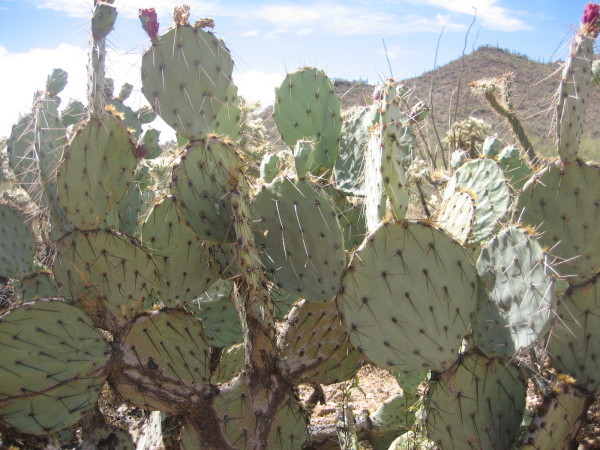
We continued driving until we reached the entrance of the Tucson Mountain District section of the park and its visitor’s center. At the ranger’s suggestion, we decided to explore the Signal Hill trail, one of eight scenic, dusty trails in the park. She recommended it for its petroglyphs, the prehistoric drawings and images carved into the mountain rocks by the indigenous aboriginal inhabitants of the southwest.
The arid landscape was impressive, encompassing one of the most unusual ecosystems in the continental United States. As I would discover, the Sonoran Desert is far richer in plant life than any other desert I had ever visited, including the alluring Sinai Peninsula in Egypt.
As we walked along a marked foot path after leaving the car, I spied fire-resistant ponderosa pines, as well as mesquite — a common desert tree — and Douglas fir high up on the mountain slopes.
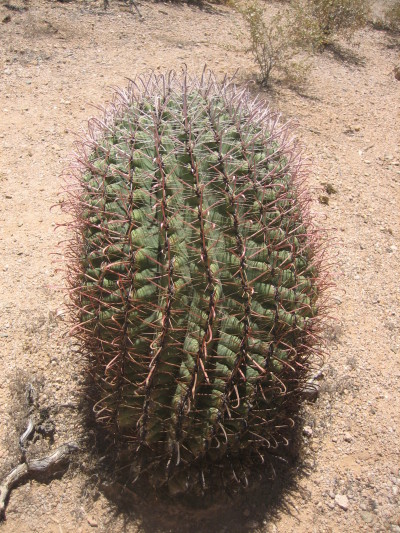
There are 25 species of cacti here, from the fishhook and the teddybear cholla to the hedgehog barrel and the prickly pear. But the cactus that held me in thrall from the moment I caught sight of it was the saguaro — which can live up to 200 years, grow to a height of 50 feet and weigh 16,000 pounds or more.
Starting off as a shiny black seed as big as a pinhead, the saguaro cactus produces thousands of seeds a year and upward of 40 million in a lifetime. Few of them survive to adulthood, the seeds and seedlings being eaten by animals like coyotes and squirrels and birds like purple martins and Harris hawks.
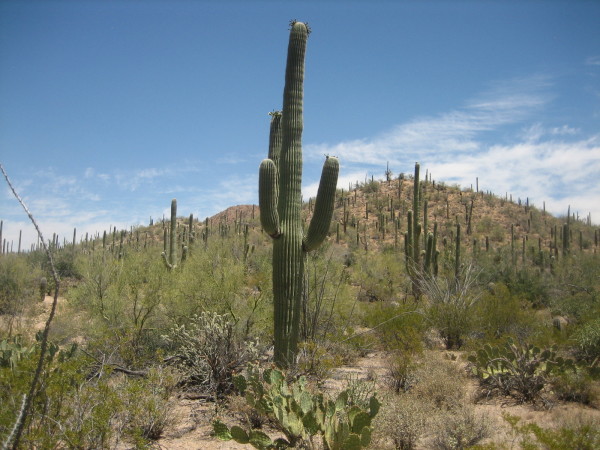
A saguaro cactus can also succumb to strong winds, lightning strikes, droughts, freezing temperatures, vandalism and poaching. Until recently, a major cause of their deaths was livestock grazing, which was eliminated in 1979.
The saguaro cacti with the best chance of survival are those that mature under the protective umbrella of rocks or “nurse” trees like mesquite and palo verde, which shade them from intense sunlight, protect them from bitter cold and conceal them from predators.
They grow exceedingly slowly, particularly during the rainy season in the summer, when flash floods occur. After 15 years, a saguaro cactus may be barely 12 inches tall. Typically, each saguaro cactus can soak up to as much as 200 gallons of water a year, enough to sustain them through scorching dry spells from about May until October or November.
Supported by a flexible cylinder-shaped framework of long woody ribs, it begins to flower and produce fruit at the age of about 30. Its creamy white flowers bloom from April to June and its fig-like fruits can be converted into jam, syrup and wine. After 75 years, it sprouts its first branches, or arms. Saguaro cacti that reach old age tower above the desert floor like enormous phallic symbols.
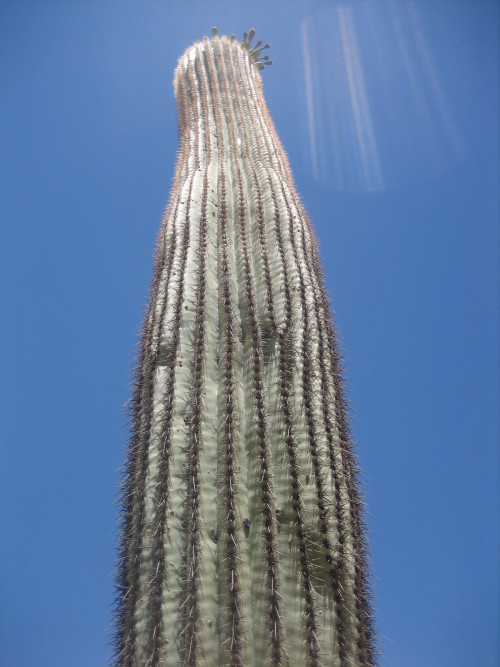
As I stood at the base of one of the taller specimens, feeling its tough exterior and admiring its longevity, I was overtaken by a sense of awe.
Much to my surprise, I learned that a saguaro cactus can be compared to a high-rise apartment building, since a multitude of animals and birds live in it. The gilded flicker and the Gila woodpecker drill next holes in the trunks and larger branches, eventually abandoning the cavities and leaving them for others to nest in.
Lauren and I crossed a wash, a dry river bed, and it was still and serene. But during the rainy season, when the desert is prone to dangerous flash floods, visitors are strongly advised to avoid washes.
Visitors should also be beware of rattlesnakes, which seek shelter in the shade of rock crevices or bushes, and of Africanized honey bees, which will attack if their hive is under threat. Mountain lions, known also as pumas or cougars, inhabit this region, but are rarely seen.
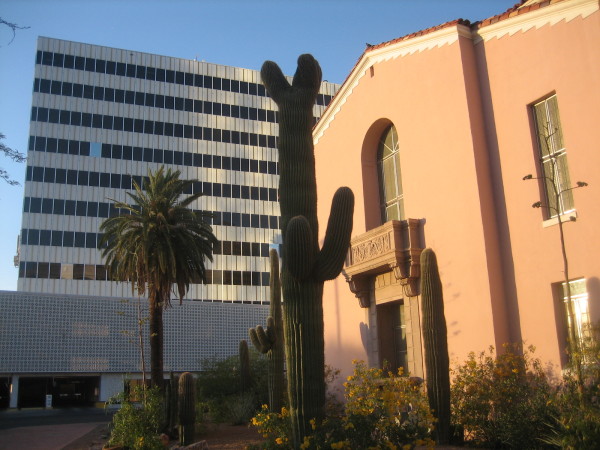
Regrettably, we missed the petroglyphs, having failed to follow a sign leading to them. But it was not the end of the world. We had already seen wonders of nature in this amazing park, especially the saguaro cactus, and we could leave without a heavy heart.
